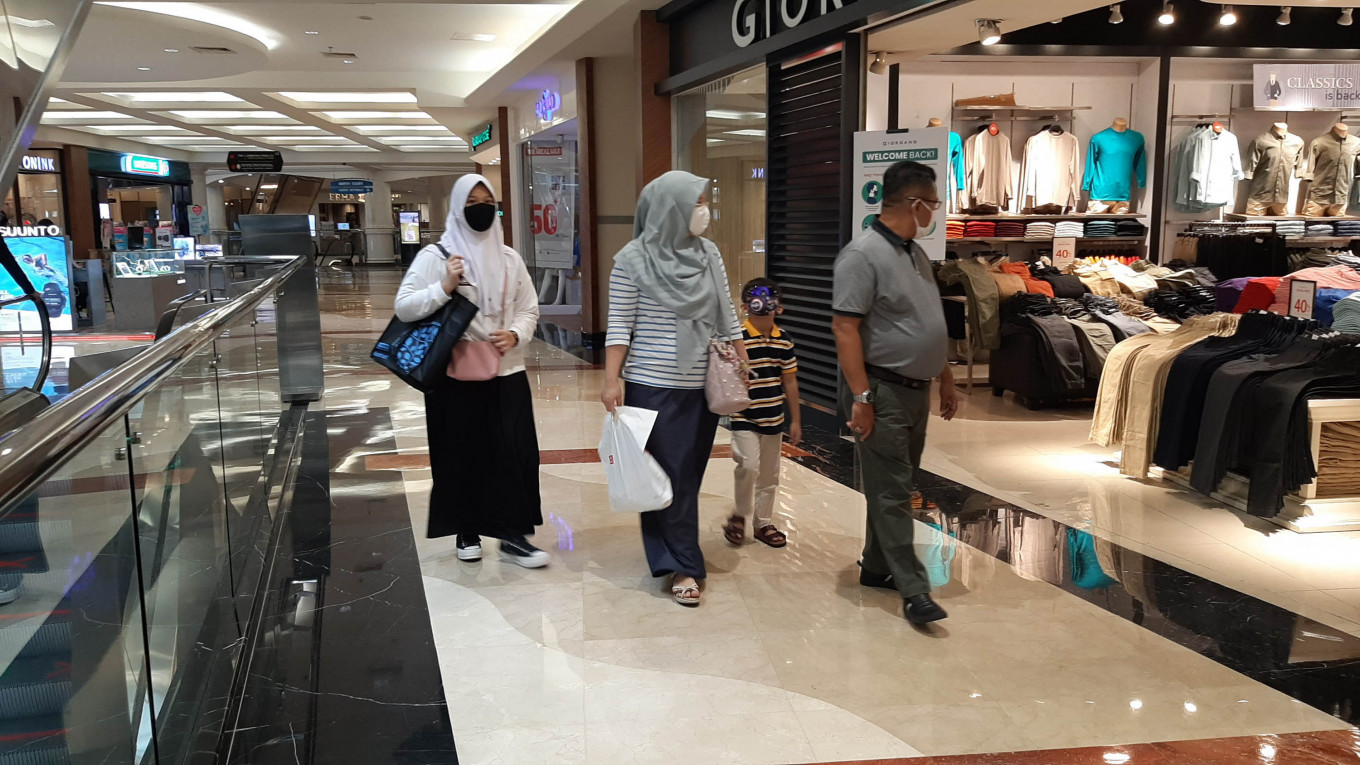Popular Reads
Top Results
Can't find what you're looking for?
View all search resultsPopular Reads
Top Results
Can't find what you're looking for?
View all search resultsCOVID-19: A game of Snakes and Ladders?
Seeing that the infection fatality rate (IFR) for COVID-19 is low and the recovery rate is very high, is it time that we should not worry too much about COVID-19?
Change text size
Gift Premium Articles
to Anyone
As of July 14, it has been 227 days since SARS-CoV-2, the virus that causes COVID-19, first appeared in Wuhan, China.
The disease might be spreading rapidly all over the world now than ever before. There is a new trend related to COVID-19 that got my attention.
The global total of confirmed cases as of July 14 is 13,445,145 cases with 580,229 deaths, but the number of deaths per day has been relatively stable compared to new cases. The death rate has averaged around 2,500 deaths per day since Dec. 1, 2019.
This is very good news, as it means that, surprisingly, the infection fatality rate (IFR) has been less than 5 percent so far.
Another surprising news is that around 59 percent of infected people have recovered from the disease. In some cases, however, people might risk reinfection if they are not careful.
According to WorldoMeter, out of 13.44 million cases, 7,831,145 people have recovered from the disease, while 5,033,771 people are still being treated at hospitals.
In Indonesia, for example, we had 78,572 confirmed cases and 3,710 deaths on Tuesday. Out of this number, 37,226 people are still sick but 37,636 people have recovered, a remarkable sign: more people have recovered from the disease than people who are suffering from the disease.
We can see this trend in many countries except the US, which has more active cases than recovered cases.
“We should not forget that we still do not have a vaccine or a cure for COVID-19,” Sanjeevini Pertiwi, who studied infectious diseases, told The Jakarta Post on Wednesday.
Seeing that the IFR for COVID-19 is low and the recovery rate is very high, is it time that we should not worry too much about COVID-19?
No, says the World Health Organization (WHO): we must remain vigilant and the health protocols should not be relaxed.
“Let me be blunt, too many countries are headed in the wrong direction. The virus remains public enemy number one, but the actions of many governments and people do not reflect this,” WHO director-general Tedros Adhanom Ghebreyesus told journalists on July 13 in Geneva.
“If the basics are not followed, there is only one way this pandemic is going to go. It’s going to get worse and worse and worse. But it does not have to be this way,” he stressed.
We do not have the exact scientific reason to explain the low IFR. But some speculate that elderly people, who are the most vulnerable, are taking precautions to avoid getting COVID-19.
“It could also be that most new cases are in younger people, whose risk of dying from the virus is far lower. The median age of those testing positive in the US is falling, suggesting that while older people continue to shelter and avoid infection, younger people are being infected as they return to work and socializing,” Michael Le Page writes in New Scientist on the discrepancy between declining deaths and soaring cases in the US.
It may be true that the coronavirus might be changing. In the early months of the pandemic, COVID-19 showed a special interest in elderly people, mostly elderly men. The disease was especially fatal for people who had chronic diseases.
Until recently, the virus ran rampant in rich countries like the US, the UK, France, Italy and Spain. COVID-19 is apparently now targeting people in poor and developing countries like Brazil, India, Mexico, Peru, Pakistan, Bangladesh and many countries in Asia and Africa.
Snakes and Ladders
It seems like COVID-19 is similar to Snakes and Ladders, an ancient board game from India.
For several months China, where the virus originated, was the country with the highest number of COVID-19 cases and deaths. What is China’s ranking today in the context of the COVID-19 pandemic?
With 83,605 confirmed cases, China is 24th in terms of COVID-19 caseload.
Likewise, Italy, Spain, France and Germany no longer number among the top 5 countries for confirmed cases. They may descend further down the list as countries from Americas, Asia and Africa climb up the ladder with thousands of new cases every day.
Even spread
So far, the disease has spread to 213 countries and territories, and 22 countries have more than 100,000 confirmed cases each.
With 3,543,766 cases and 139,118 deaths, the US tops the list. On Tuesday alone, 64,283 Americans were infected with COVID-19.
Brazil comes second with 1,931,204 cases and 74,262 deaths. With 937,487 cases, India is the third COVID-19 hotspot in the world.
The spread of COVID-19 is relatively even across the world, with 74 countries that have more than 10,000 cases each, while 140 countries have more than 1,000 cases each.
The three T’s play a significant role in curbing the spread of COVID-19: testing, tracing and treating. Among these, testing is the most important. The virus spreads rapidly and can only be detected through tests. Without testing, we do not know how many people have COVID-19.
One may ask, why does the US have the highest number of daily cases? On Tuesday, the US conducted 544,332 tests, whereas Indonesia conducted just 23,001 tests.
With 78,572 cases, Indonesia is 26th on the list. It may climb to the top 10 if we conducted 50,000 tests per day.
Many Indonesians have the wrong impression that we have a low number of cases compared to countries like India, Brazil, South Africa and Saudi Arabia, since we record between 1,000 to 2,000 new cases per day.
If we conducted 100,000 tests per day, the number of new cases will skyrocket. Nobody knows the real situation in Indonesia.
In order to flatten the curve of COVID-19 transmission, we need stricter rules and greater discipline among the people.
“We do not follow the government’s instructions fully. We lack discipline. We can learn a lot from countries like Japan, whose people are highly disciplined. That is why Japan has the lowest number of cases and deaths,” Mery Harita, a medical doctor, told the Post recently.
We have to be very disciplined about wearing masks and maintaining physical distance. COVID-19 will not go away until a vaccine is found.










